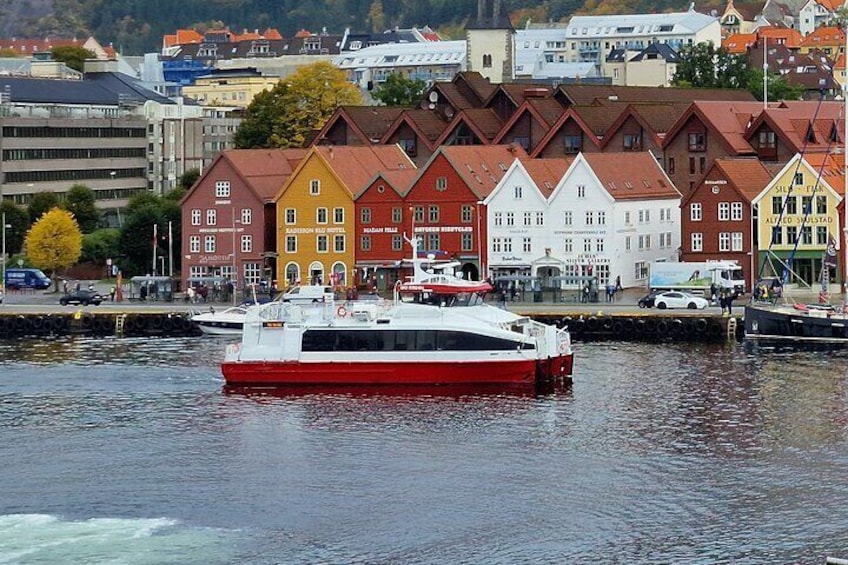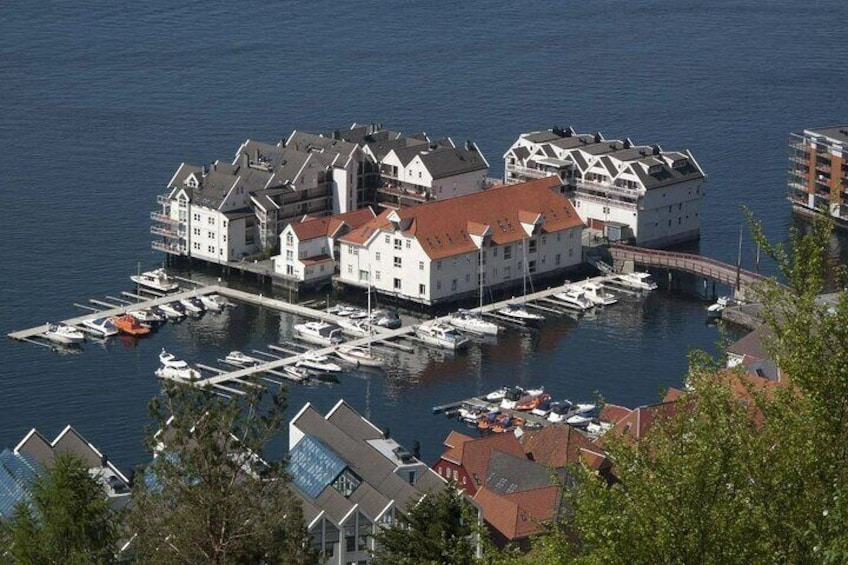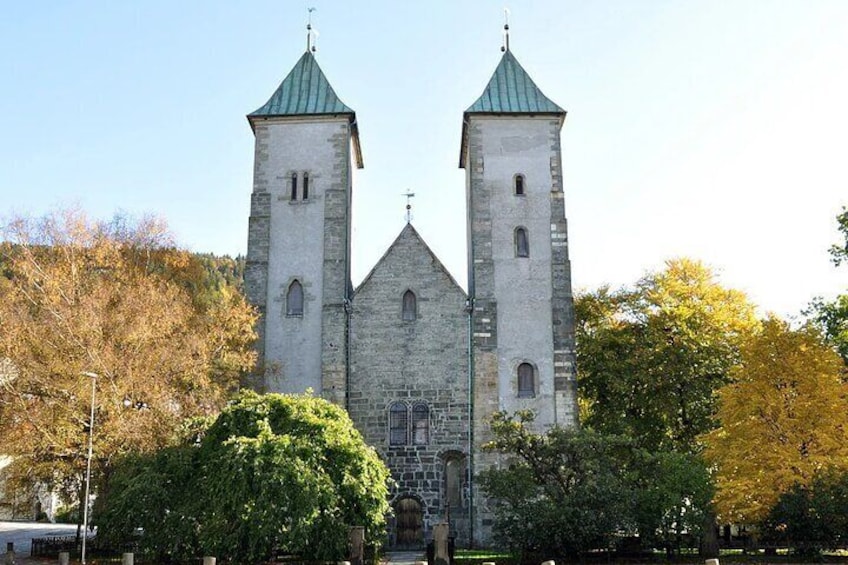




Bergen City Cruise
8.4/10
8.4 out of 10Features
- Free cancellation available
- 1h
- Mobile voucher
- Instant confirmation
Overview
Experience Bergen from the sea on this 60-minute intimate sightseeing cruise in Bergen's harbours and the City Fjord. See some of the oldest and most relevant historic sites in the city, including the medieval fortress that served as the seat of Norwegian power in the 13th century and the colourful emblematic Bryggen wharf that made the city thrive as a successful trading centre.
Get glimpses of how the city looked like in the old days when you sail past the old wooden warehouses in Skuteviken and Sandviken, and marvel at the luxury residences blossoming on top of skerries at Måseskjæret or springing out from the mountainside at Verftet.
Hard to spot otherwise, you will sail past the WW2 concrete ruins of the U-Boot Bunker Bruno before waving at the locals swimming in the fjord at the historical Nordnes Sjøbad and returning back to the Fish Market and the very heart of Bergen.
Activity location
- Strandkaien 11
- 11 Strandkaien
- 5014, Bergen, Vestland, Norway
Meeting/Redemption Point
- Strandkaien 11
- 11 Strandkaien
- 5014, Bergen, Vestland, Norway
Check availability
Bergen City Cruise
- 1h
- English
What's included, what's not
- Bergen City Sightseeing Cruise
- Food and drinks
Know before you book
- Infants and small children can ride in a pram or stroller
- Service animals allowed
- Public transport options are available nearby
- Suitable for all physical fitness levels
Activity itinerary
Bryggen Hanseatic Wharf (Pass by)
St. Mary's Church (Pass by)
Bergenhus Fortress (Pass by)
Skuteviken (Pass by)
Måseskjæret (Pass by)
Byfjorden (Pass by)
Ubåtbunkeren Bruno (Pass by)
Georgernes Verft (Pass by)
Fredriksberg Fort (Pass by)
Nordnes Sjobad (Pass by)
Bergen Aquarium (Pass by)
Tollbodallmenningen (Pass by)
Nykirken (Pass by)
Murhvelvingen (Pass by)
Fish Market (Pass by)
Location
Activity location
- Strandkaien 11
- 11 Strandkaien
- 5014, Bergen, Vestland, Norway
Meeting/Redemption Point
- Strandkaien 11
- 11 Strandkaien
- 5014, Bergen, Vestland, Norway